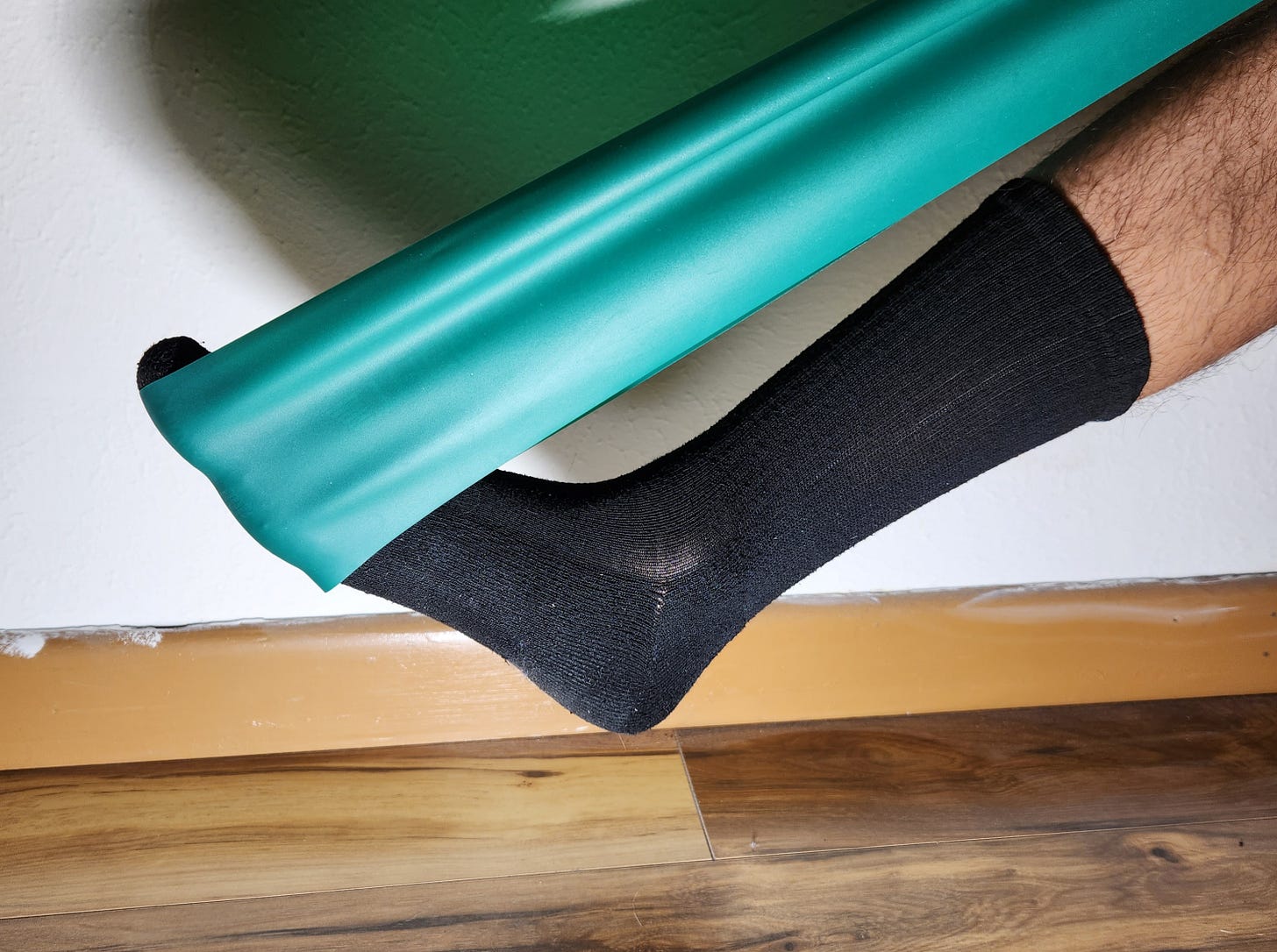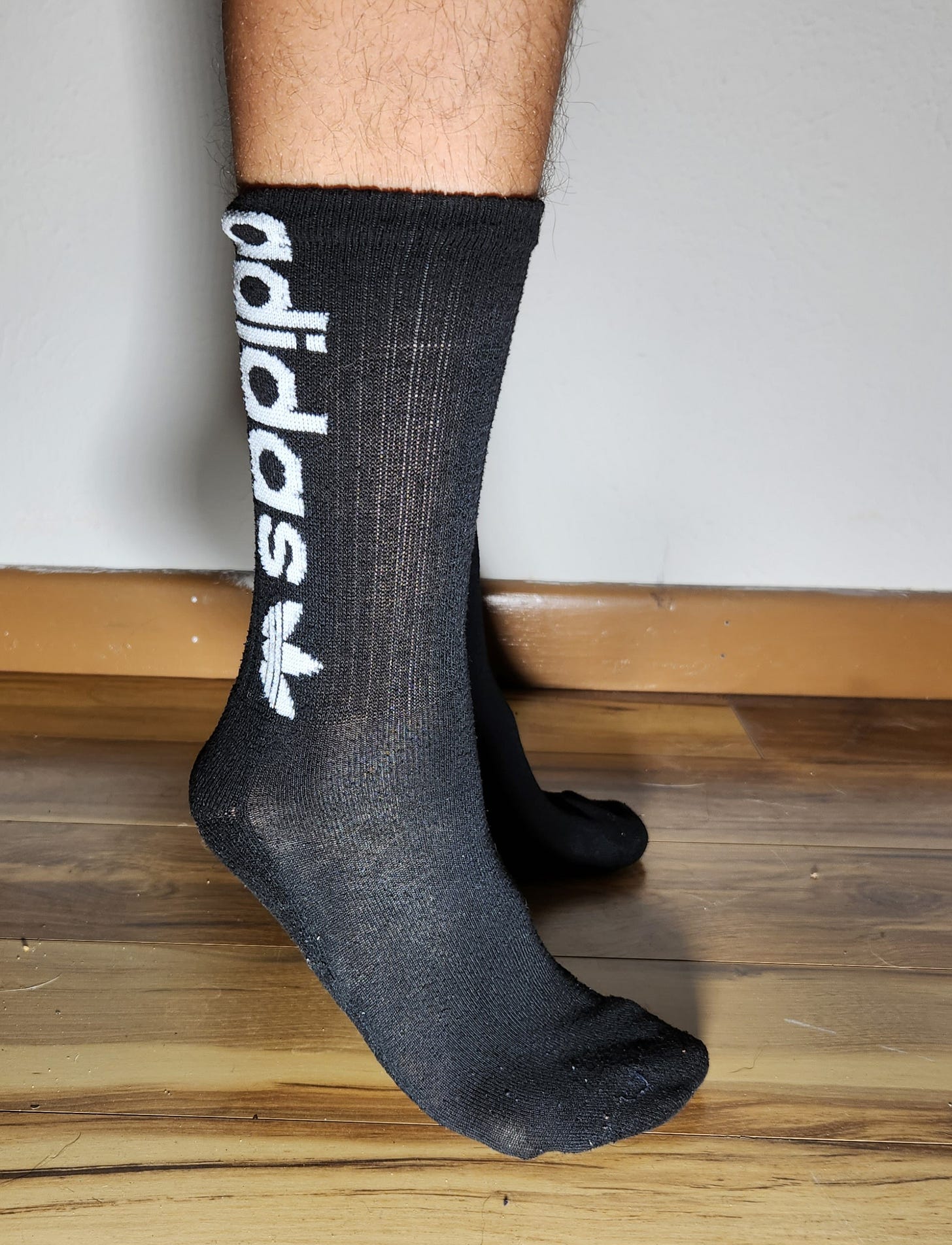Plantar fasciitis
More strengthening, please...
This is not medical advice.
First, a story to make fun of myself that you may enjoy.
Before I had kids, and people would tell me they stepped on toys, in my head I would think, “open your eyes, and pick up your feet…” Now that I’ve had kids, and have stepped on tiny Legos, I now understand a couple things better…
Karma, and plantar fasciitis pain.
Plantar refers to the undersurface of the foot, fasciitis mean inflammation of the fascia, or connective tissue. Plantar fasciitis is something I’ve treated in practice many times. I’m going to share with you, anecdotally, what I have seen as the most successful course of action.
I’m going to start talking about massage first, so that people won’t stop reading when I talk about exercise right away :) Yes, massage is something that I have seen decrease plantar fasciitis. Hands on would be preferable, but you can also massage the foot with many other things, like tennis balls, or stiff foam rollers.
I think we have a better chance of decreasing this problem if we understand the challenges of the foot. This again is something that most of us take for granted.
The foot and ankle work as a flexible coordinated symphony of dozens of bones, muscles, and ligaments, to support us when we stand, walk, run and jump. Most of this is subconscious motor learning over the years. We don’t have to consciously think about which muscles to fire and when. Our brains learn to do this through motor learning patterns. Some of the bones are the size of a pebble. Standing, they hold the force of our body weight, so we’re talking 120lbs and up. Jumping and running is many times that force. Amazing they don’t hurt more often.
This is an extremely oversimplified explanation of plantar fasciitis pain. There is a web like soft tissue that connects many structures underneath our feet. To me, it is like a bow structure, with the bow being the arched bones of the foot, and the string is the plantar fascia.
As we load weight onto the foot, we are putting pressure on the arch, and the plantar fascia is the string helping to hold the arch and the whole structure together.
For many people, the pain arises in the morning, when they first get out of bed, suggesting that the soft tissues tightened overnight. So the typical suggested exercise is to stretch that structure.
I am of the opinion that the structures of the foot need more strengthening, and the initial problem has to do with foot weakness. The incidence of seeing people with plantar fasciitis who are relatively fit, is very low. Usually it arrises in people who do less activity.
Stretches may be important, but I also have people do many heel raise type exercises to strengthen the foot. Preferably the exercise is pain free. If it is not, I will have them do hundreds of pain free reps with a rubber band, then progress to slant sled (like a Total Gym at low level), and then progress to pain free standing heel raises.
If we lack basic range of motion in a joint, that does need to be restored. Other common exercises include towel scrunches with the toes, like Bruce Willis in Die Hard (think back real hard for that scene). Or picking up marbles or other objects with your toes. We sadistically dump a bunch of them on the floor, ask you to pick them up with your toes, and drop them in the original bucket. This will take a while, so we walk away to get coffee and gossip with coworkers.
Here’s the bigger picture, of why I think we have this pain. We passively rest on these foot structures, on unnaturally hard surfaces. Try lifting your arches, or rocking onto the balls of your feet, when having to stand for longer periods. Use the foot muscles to support the arch. This is more of an active foot posture, instead of passive.
Some people opt for pain injections. I have seen mixed results with that, and can’t say not to. I would encourage people to try the pain free strengthening, massage, and active foot postures first.




